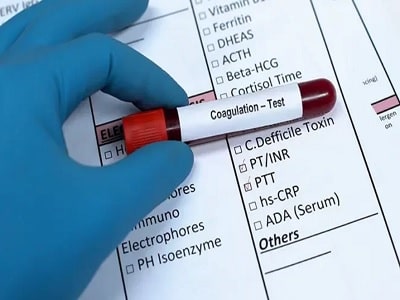Blood coagulation diagnostic tests
Diagnostic tests on blood
Various diagnostic tests are performed on blood samples. Each of these tests is done for a different purpose and can have a great impact on people’s health. One of the most important samples for testing is the blood sample. The factors in the blood, as well as the decrease or increase of these factors, can clearly reflect a person’s health status. Specialist doctors can determine the health status of the body to some extent based on the results obtained from the blood tests. In addition to diagnosing the disease, tests can help monitor the health of the body a lot.
Cell Blood Count (CBC) test
One of the diagnostic tests on a blood sample is the CBC test. This test can show the status of the number of blood cells. CBC test which is performed on the sample containing EDTA anticoagulant; The number of red blood cells shows the amount of hemoglobin, the total number of white blood cells and the number of white blood cells separately, the size of red blood cells and the number of platelets. The number of each of these blood cells can indicate the health status of the body. Many diseases, such as various anemias, early signs of blood malignancy and coagulation problems of the body can be diagnosed from the results of this test.
Increase and decrease in the number of White Blood Cell (WBC)
Another diagnostic test is to check the increase and decrease of WBCs. An increase in white blood cells usually indicates problems such as infection in the body. Apart from infection, the increase and decrease in the number of white blood cells or the presence of immature blast cells that produce mature cells can cause various possibilities, including blood malignancies. As a result, if in the initial examination, the number of white blood cells was more or less than normal or suspicious cases were observed; More investigations are needed. Further tests, such as smearing and examining the morphology of white blood cells, can reveal possible problems and help the doctor reach a final diagnosis.

Investigating the increase and decrease of the number of platelets (Plt)
Another diagnostic test that is performed on a blood sample; Counting and checking the increase and decrease in the number or morphology of platelets. Platelets are responsible for blood clotting. Their increase can indicate the risk of blood clots. These clots can cause a stroke. As a result, the measurement of this parameter is very important. The reduction of platelets also shows that the coagulation pathway may not work properly. As a result, the possibility of bleeding and creating a hematoma will increase. Also, when a person bleeds for various reasons, such as surgery, if the number of platelets is low; Blood clotting time increases. As a result, the number of platelets in CBC is very important. In case of an increase or decrease in the number of platelets, a slide must be drawn by an expert in the laboratory to check the number of platelets accurately.
Coagulation diagnostic tests
coagulation tests are including diagnostic tests performed on blood samples. Coagulation factors and other factors such as calcium are involved in the process of blood coagulation. In the process of blood coagulation, various factors cause, finally, red blood cells are connected to each other and the bleeding is stopped by a clot. A difference in the normal process of coagulation can cause thrombosis. Thrombosis or the formation of clots can be dangerous and cause blockage of blood vessels.
Clogged arteries have many effects on a person. For this reason, it is recorded in the calendar of World Thrombosis and Hemostasis Day. The reason for this day is the importance of this issue. October 13, has been designated as World Thrombosis and Hemostasis Day in the world calendar. Coagulation tests check the possibility of thrombosis in the body.
Reason for performing coagulation tests
Diagnostic tests performed to check the state of the blood clotting cascades that can help the doctor predict the possibility of a clot or heavy bleeding. The formation of a clot or thrombus is dangerous because this clot can move with the blood flow and cause blockage of the blood flow in the narrow vessels, especially the heart vessels, and cause a stroke. Coagulation tests were designed in such a way that they can be used to determine which part of the problem in the coagulation process is related to the possible deficiency of which factor.
PT and PTT tests
PT and PTT tests are among the common tests performed to diagnose coagulation status. These tests are very accurate and can be done manually or by machine. Each of these tests can measure the status of different coagulation pathways. The PT test examines how the prothrombin protein works. If this test has its normal time; The doctor realizes that the person does not have a problem with blood clotting in this way.
Another test; PTT, also measures the activity of prothromboplastin protein. In addition to the mentioned tests, there are many other tests, such as D-Dimer, FDP, specific coagulation factors and protein C, S which are used to diagnose coagulation problems.
Sample required for coagulation tests
Generally, diagnostic tests for coagulation problems are performed on a blood sample. But it must be said that not every blood sample is suitable for coagulation tests. For example, the sample used for CBC contains EDTA anticoagulant, but for PT and PTT tests, a sample containing sodium citrate anticoagulant is used. Also, the ratio of said anticoagulants to blood is also different. These ratios must be observed to obtain accurate results.

Payvand Clinical & specialty laboratory as the most reliable center for diagnosis of malignancy and blood disorders in the country provides precise and fast Specialized and sub-specialize laboratory diagnostic services by acquiring modern equipment and relying on the latest world knowledge and having routine and specialized departments of hematology and coagulation .


